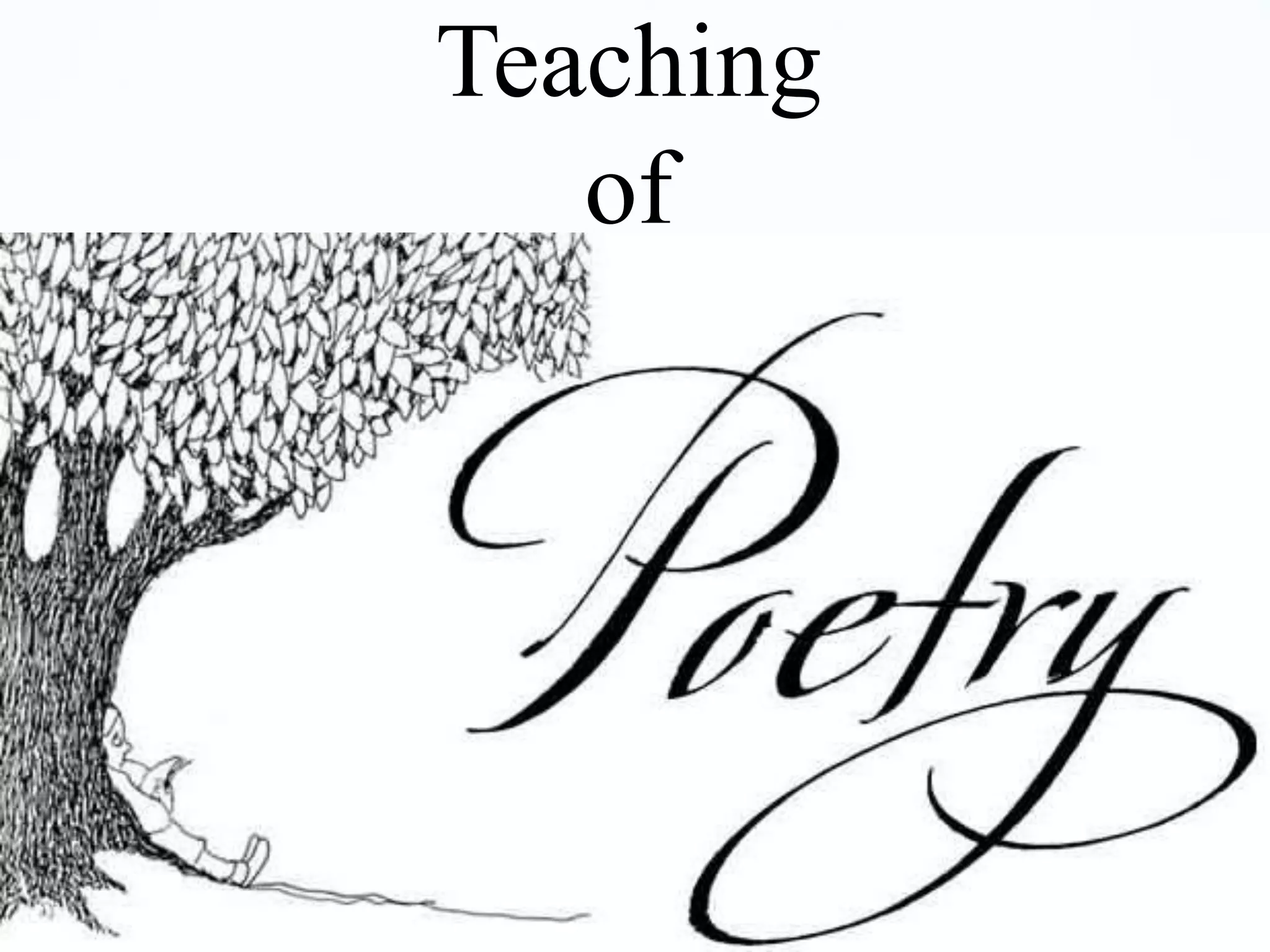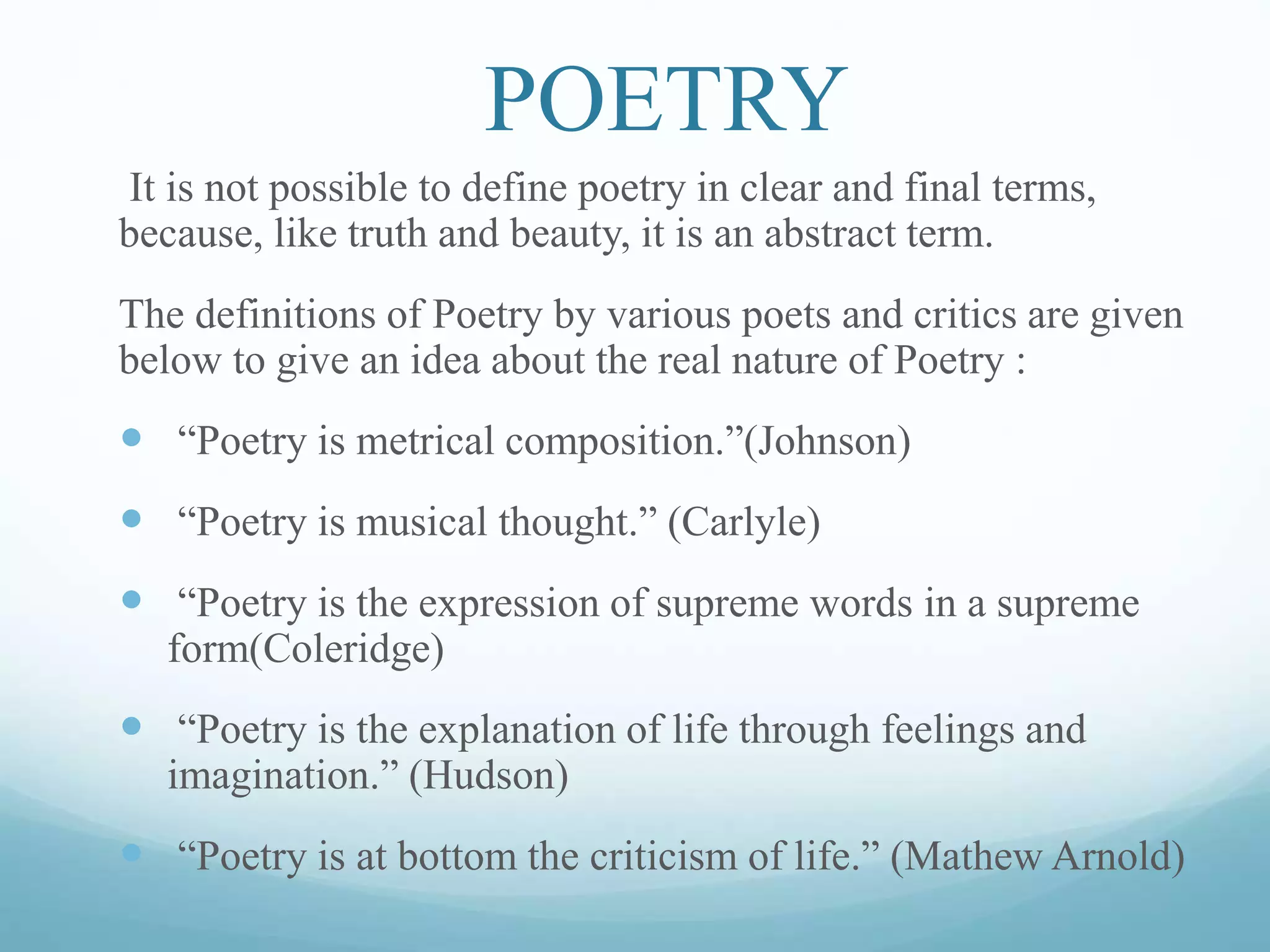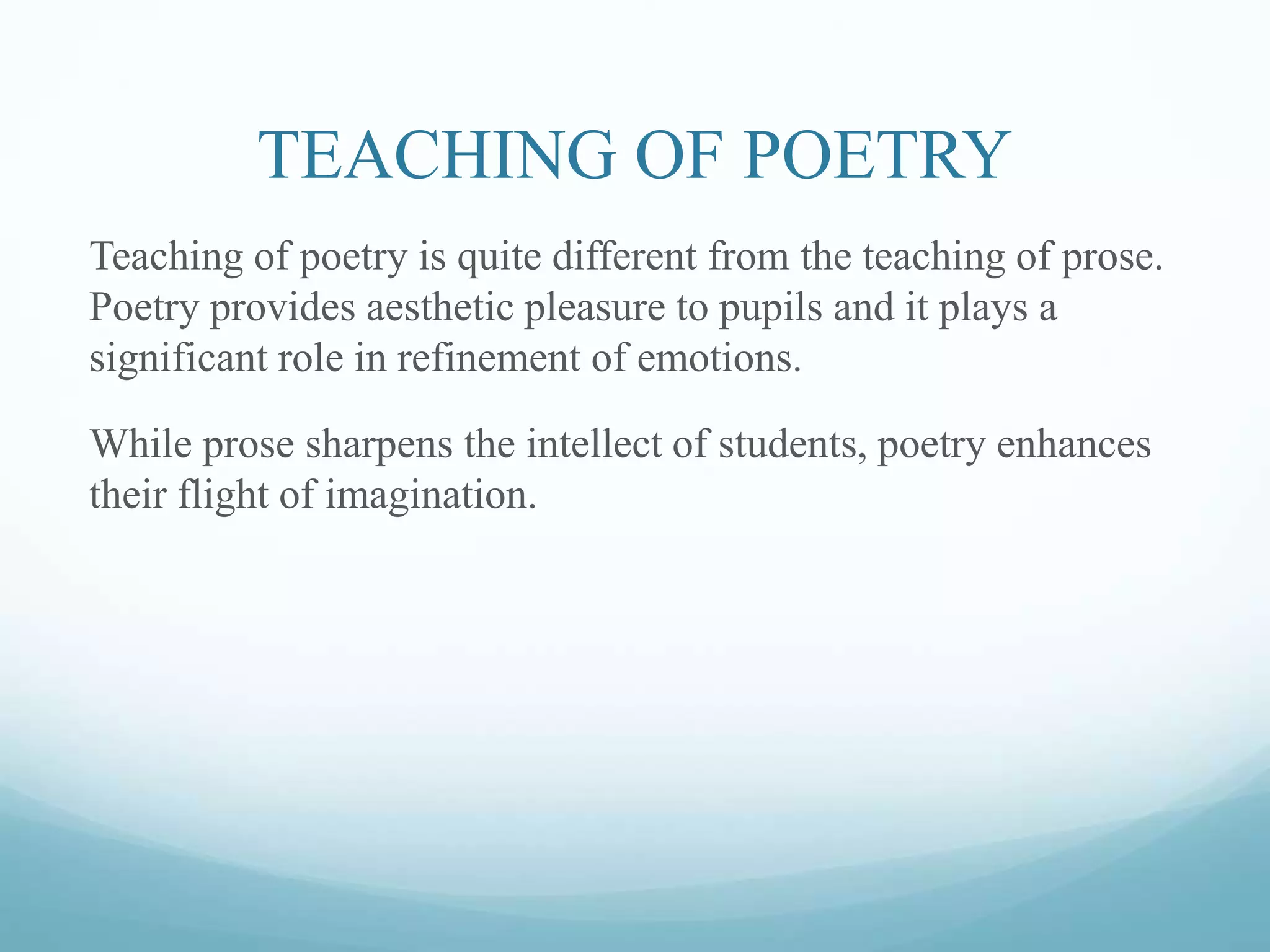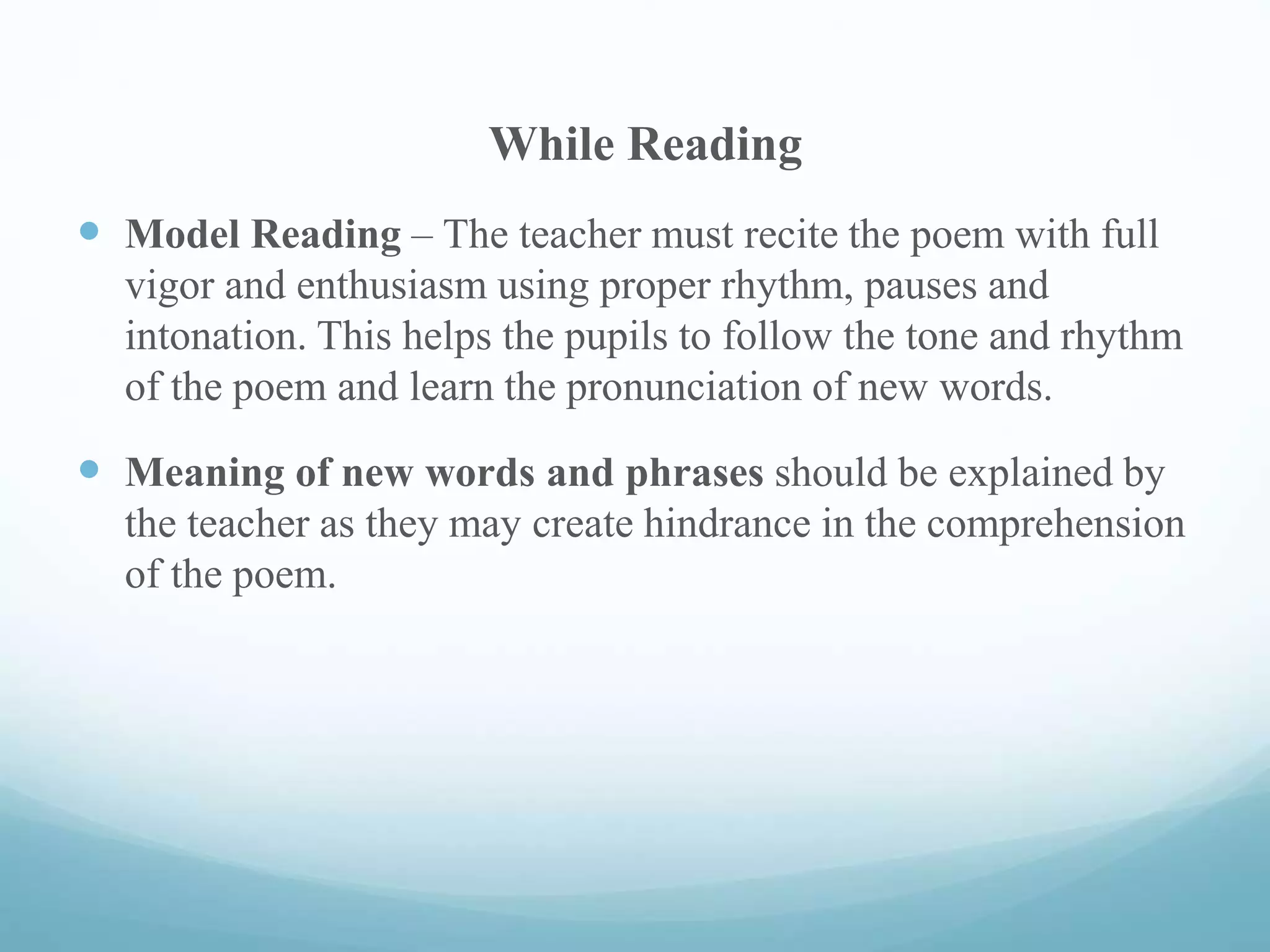Teaching poetry effectively requires creating an environment where students can appreciate the beauty of poetry. It is important to engage students' emotions and imaginations when reading poems. Teachers should model expression when reciting poems and encourage students to recite poems aloud. Comprehension questions after reading check understanding, while appreciation questions help students analyze poetic techniques like imagery, figures of speech, and themes. The goal of teaching poetry is to help students find joy in poems and develop an appreciation for the art of poetry.































